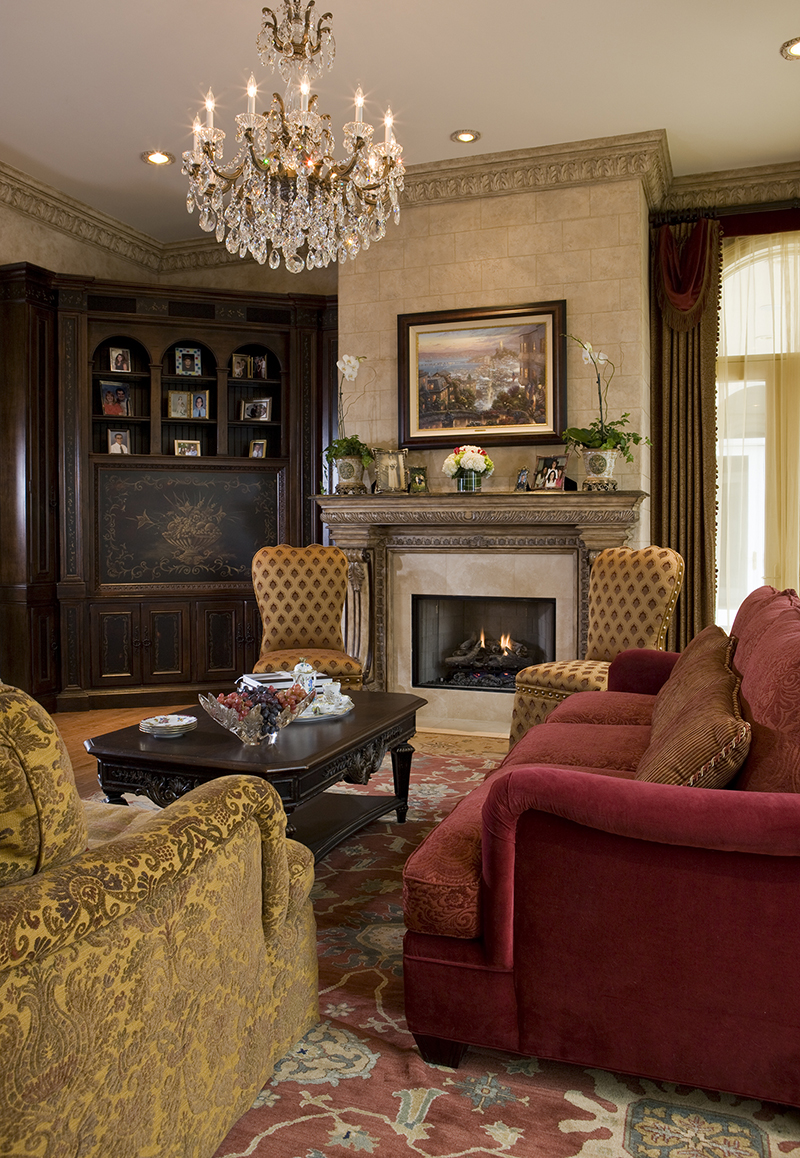Transitional design vs. Traditional design? What’s the difference? Although they both have similarities when it comes to Interior Design, and Transitional uses some Traditional styles, and there are some similarities when it comes to their foundational elements, their finished look is very different. Here are some of the ways they differ in style, color scheme, lighting, pattern, woodwork and accessories:
Styles
Transitional design is a combination of contemporary and traditional styles that offer a timeless, delightful design. This combination ensures a striking balance between the feminine and masculine features of the home and mixes modern lines with classically curved transitional furniture and finishes.
Traditional design, on the other hand, has characteristics of a 17 or 18th century style which brings warmth and comfort to your interiors.
Color Scheme
Transitional design is known for neutral background clean color scheme, such as grey, beige, and cream. By incorporating rich, clean woods or other materials into your home, this design gives your room a serene atmosphere that promotes comfort. The use of geometric shapes is very common to bring
Traditional design uses neutral tones, however they include rich and warm color palettes.
Lighting
Transitional design lighting is one of the areas where it favors contemporary style over traditional style. When it comes to sophistication with touches of simplicity, you can make use of high-quality light fixtures. Combine neutral backdrop, minimal accents and enchanting stainless steel for a perfect interior space you will love.
Traditional design is best remediated with vintage lighting or bronze-accented chandelier. Ornate-inspired lighting with shades of ivory does the magic too.
Pattern
Transitional design does not equal symmetry. Create an engaging and deep space with geometric patterns, wood tones, and leather. Then, combine various textures to create a clean and interesting space.
Traditional design ensures symmetrical patterns. No matter the space, a wide range of colors and patterns can be combined for a more prominent appearance. Traditional design style textiles can be rich and varied resources for injecting riotous yet classic color and pattern throughout your space. The sky’s the limit. From antique tapestries to fresh gingham to florals to paisley, there’s plenty of opportunities to mix patterns together and make it look beautiful.
Woodwork
Transitional design uses paneling which is a bit subdued as it tends to be painted to easily combine with other furniture and items in your home. The color of the woodwork can be neutral or light. Detailed millwork can be used but it doesn’t define the furniture nor decor.
Traditional design woodwork is heavily pronounced with dark wood, curves and detailed furniture with a backdrop of ornate woodwork to warm up your room. There’s a great amount of intensity to easily catch the attention of everyone right from the moment of entering your space.
Accessories
Transitional design avoids adding various decorative pieces that will take the shine off your style, so minimal accessories are required for a finished look.
Traditional design is the hub of various accessories and is all about the finer details. Think of candleholders, figurines, crystal bowls, classic lamps and shades, vases, decorative throw pillows, mirrors, sconces, book collections and chandeliers. It’s also common to add a dash of gold and silver to any of these accessories for some natural sophistication.
Which of these two styles do you prefer? Are you a lover of the heavily accented and intense Traditional design or the subdued, serenading Transitional design?


